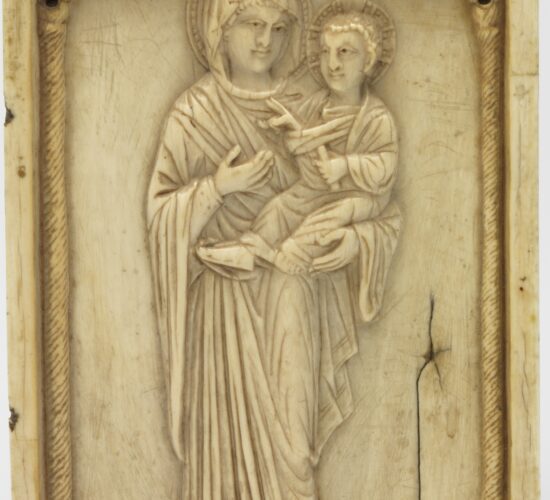Summary of Binding opinion
The Restitutions Committee has assessed an application for restitution of a Byzantine ivory relief entitled Hodegetria or Virgin and Child (maker unknown), which is currently held by Rotterdam City Council and is in the collection of Museum Boijmans Van Beuningen. Research by the Expert Centre Restitution (ECR) has shown that this artwork came from the collection of the A.S. Drey art gallery in Munich, which until 1936 was in the hands of the German-Jewish Drey family. It has become sufficiently plausible that possession of the work was lost involuntarily due to circumstances directly connected with the Nazi regime.
The art gallery Kunsthaus A.S. Drey, which was founded in 1837, was a renowned family business, with subsidiaries in Paris, New York, London, Brussels and The Hague. The takeover of power by Hitler in 1933 put an end to a long period of growth. The clients stayed away, and the proceeds dropped sharply. The partners – a son and four grandsons of the founder Aron Siegfried Drey – felt it necessary to sell their large shop and adjoining residence in the centre of Munich and were confronted by disproportionate tax measures that were aimed at Jewish people. The business was furthermore accused of tax fraud on the basis of a dubious investigation. Burdened by the threat of a criminal prosecution and the realization that otherwise leaving Germany would not be possible, in February 1936 partner Siegfried Drey signed a declaration of submission, which meant that the sums being demanded became collectable immediately. A few moments later he had a heart attack in a taxi, collapsed and died. In order to be able to pay the ‘tax debt’ and penalties, the firm sold the lion’s share of its trading stock, including the ivory relief Hodegetria or Virgin and Child, at the Paul Graupe auction house. The art gallery was Aryanized at the end of 1936, and around the same time the partners were able to get out of Germany. In the late nineteen-thirties the ivory relief was in Amsterdam in the Goudstikker gallery, which sold it to the industrialist D.G. van Beuningen. After his death, in 1958 it was acquired by Rotterdam City Council for placement in Museum Boijmans Van Beuningen.
Since Museum Boijmans Van Beuningen, on behalf of Rotterdam City Council, waived the right to invoke good faith in regard to the provenance of the artwork when purchasing it, the Committee did not subsequently conduct research in this regard. The Committee advised the City Council to restitute the artwork Hodegetria or Virgin and Child to the legal successors of the partners of the A.S. Drey gallery.
